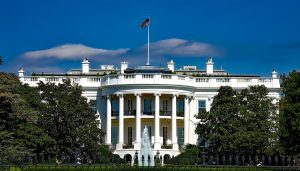Authors: Steven Cernak and Luis Blanquez
On July 19, 2023, the FTC and DOJ Antitrust Division issued the draft of their long-anticipated Merger Guidelines. Like prior iterations, these Guidelines are meant to explain to potential merging parties how the agencies will evaluate their proposed transactions. Earlier versions included input from noted experts across the antitrust community and so also proved persuasive to many courts evaluating challenges to mergers by the agencies. Time will tell if these Guidelines have the same power when they are finalized after the comment period expires in late September.
Below, we provide a very short summary of these new Guidelines. But one notable feature of these Guidelines is their heavy reliance on caselaw, much of it decades old, rather than near-exclusive reliance on the latest economic thinking. The result is that many cases that antitrust practitioners might not have read in years, if ever, might suddenly be important again. Because we here at Bona Law have frequently written about such “classic antitrust cases,” we will cover two of those “suddenly classic” cases below and a few more in subsequent articles.
New Guidelines Summary: Antagonism Towards Mergers
Government agencies usually challenge proposed mergers and similar transactions under Clayton Act Section 7. That statute requires a challenger to show that the effect of the transaction “may be substantially to lessen competition or tend to create a monopoly.” Key here is that the statute does not require proof that the bad effect has already happened or even that it is certain to happen, only that it probably will happen in the future. (We covered this topic in a recent Fifth Circuit amicus brief supporting Illumina.) So these new draft Guidelines, like all other prior versions, explain the factors that the agencies will consider when making that prediction.
Compared to prior Guidelines, however, these new draft Guidelines list more and different reasons why the agencies will challenge mergers. They list thirteen different factors, violation of any one of which would be a reason to try to stop the merger. For example, the prior Guidelines often started with market definition and concentration levels but then analyzed further to see if those factors really would lead to competitive harm. These new draft Guidelines, by contrast, expand the ways markets might be defined; return to lower thresholds for determining when markets are “highly concentrated” and the transaction will significantly increase concentration; and explain that mergers involving highly concentrated markets or firms with 30% or more share of the market almost certainly will be challenged without further analysis. Also, transactions in markets trending toward consolidation will be challenged. Finally, mergers that substantially reduce competition in labor markets will be challenged. If this draft represents how the agencies will review mergers, look for much longer reviews and many more challenges.
How HSR Shifted the Focus of Merger Review Away from the Courts
Before Hart-Scott-Rodino was passed in 1976, the only way for the agencies to stop a proposed merger was to go to court. The result was a decent number of court opinions on merger law, including several from the Supreme Court.
HSR triggered a requirement for parties to most large transactions to file their intentions with the two federal agencies and allow review before closing. (We recently discussed the proposed changes to HSR.) While only a small percentage of such filings triggered close reviews, those extended reviews often took many months before the agencies decided to challenge them in court. By that time, many parties decided to abandon the transactions. The results of these process changes were fewer merger opinions from courts and a greater emphasis on the analysis at the agencies. As that analysis, as embedded in prior versions of the Guidelines, evolved away from that used by courts in earlier cases, a significant gap opened between the opinions and the Guidelines. Now that this new draft is, in many ways, returning to the analysis of those earlier opinions and citing many of them for support, antitrust practitioners will need to learn, or relearn, some of those old cases (as we predicted many months ago).
New Classic Cases – Brown Shoe
One of the most important classic antitrust case is Brown Shoe Co. v. United States, mentioned more than a dozen times by the new Guidelines for numerous propositions, including vertical mergers and, especially, market definition.
In Brown Shoe, the government challenged the merger between Brown Shoe and Kinney on horizontal restraints and vertical foreclosure issues. The parties argued different market definitions. The United States proposed a broad product market including all shoes. Defendants, on the contrary, segmented the product market by age and sex of customers, together with the price and quality of the shoes.
The district court concluded that men’s shoes, women’s shoes, and children’s shoes were different product markets and determined that competition was “sufficiently threatened in these submarkets to condemn the merger.” Defendants challenged the issue of market definition all the way up to the Supreme Court.
The Supreme Court affirmed the decision of the district court and basically adopted the district court’s reasoning on the market definition issue, with a particular focus on the “interchangeability” and the “unique characteristics and uses” tests.
In the Court own words:
The outer boundaries of a product market are determined by the reasonable interchangeability of use or the cross-elasticity of demand between the product itself and substitutes for it. However, within this broad market, well defined submarkets may exist which, in themselves, constitute product markets for antitrust purposes. The boundaries of such a submarket may be determined by examining such practical indicia as industry or public recognition of the submarket as a separate economic entity, the product’s peculiar characteristics and uses, unique production facilities, distinct customers, distinct prices, sensitivity to price changes, and specialized vendors.
As eloquently highlighted in Antitrust Law: An Analysis of Antitrust Principles and Their Application by Areeda and Hovenkamp, this case––while still valid––has a limited application on today’s antitrust merger analysis:
[w]hile the Supreme Court insisted on a market definition, it did so for a very different purpose than we use merger analysis for today. To be sure, in a horizontal merger case it is still important to know where output movements are threatened among the post-merger firm and its competitors, but the movement contemplated in Brown Shoe was in the opposite direction from what we consider now. Today the concern is that the post-merger firm might be able to raise prices without causing too much output to be lost to its rivals. In contrast, the Brown Shoe concern was that by reducing its price (or improving quality at the same price), the post-merger firm could deprive rivals of output, thus forcing them out altogether or relegating them to niche markets.
As a rough approximation the boundaries of such a market might be about the same as the boundaries of a relevant market under today’s definitions. When one takes more dynamic considerations into account, however, there are fundamental differences. For example, the focus on excess capacity in merger cases today typically examines excess capacity held by the post-merger firms’ rivals to see if their output increase will offset the post-merger firm’s anticipated output reduction. [52] By contrast, under the Brown Shoe rationale one might want to see if the post-merger firm has sufficient excess capacity so as to be able to steal sales from smaller rivals. Under modern analysis in product-differentiated markets we want to know whether rivals will be able to reposition themselves closer to the post-merger firm, thus increasing competitive pressures on it. By contrast, under the Brown Shoe analysis, rival firms configure themselves away from the post-merger firm in order to avoid competing with it on price. Indeed, this concern that smaller rivals would be relegated to niche markets played an important part in the litigation. [53]
Further, under the modern analysis that identifies express or tacit collusion as the feared harm, the merger tends to affect all of the firms in the market the same way. That is, if the merger tends to make collusion or interdependent pricing more likely, the non merging firms will benefit as well as the merging firms and price will increase across the market. In very sharp contrast, the analysis in Brown Shoe saw the post-merger firm as benefitting at the expense of nonmerging rivals in the same market. In this sense Brown Shoe was very much a “unilateral effects” case—the benefits of the merger accrued to Brown Shoe alone.
Further, today’s merger concern with price increases as opposed to price reductions makes relevant a new set of questions that were simply not within the purview of Brown Shoe, namely, what are the effects of a merger between relatively adjacent firms in a product-differentiated market. [54]
New Classic Cases – Falstaff
The new Guidelines cite U.S. v. Falstaff four times in the section discussing potential competition. That 1973 case, and the new Guidelines, discussed both varieties of potential competition: actual potential competition and perceived potential competition. (We discussed both varieties, as well as Falstaff, in the context of the Meta/Within merger here and here.)
 The Antitrust Attorney Blog
The Antitrust Attorney Blog







